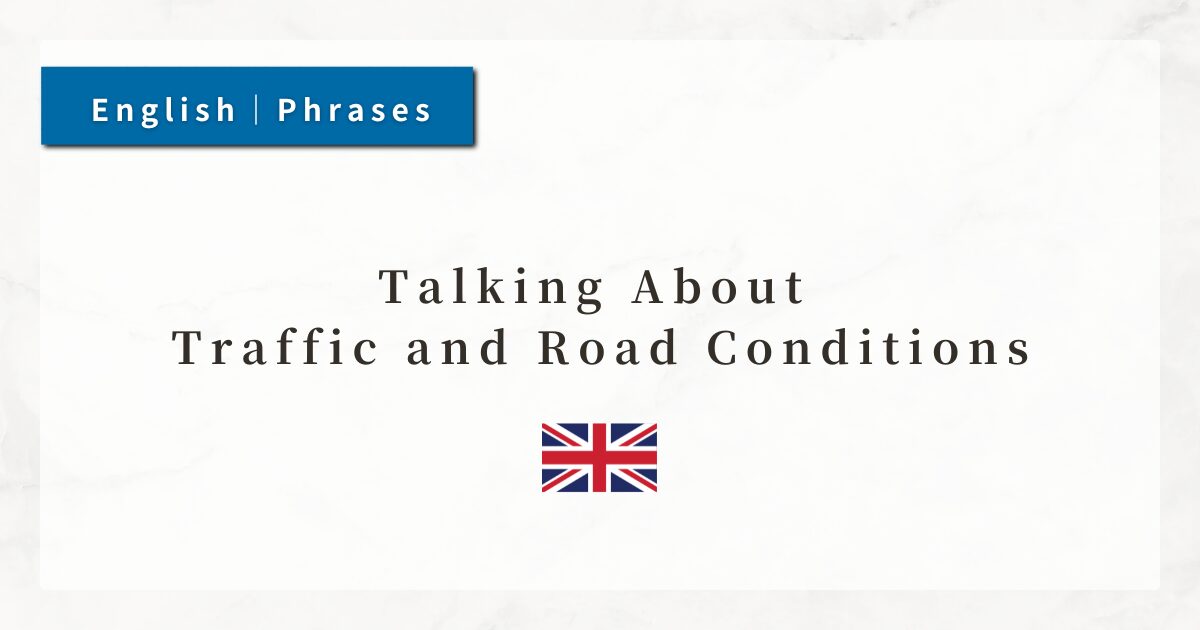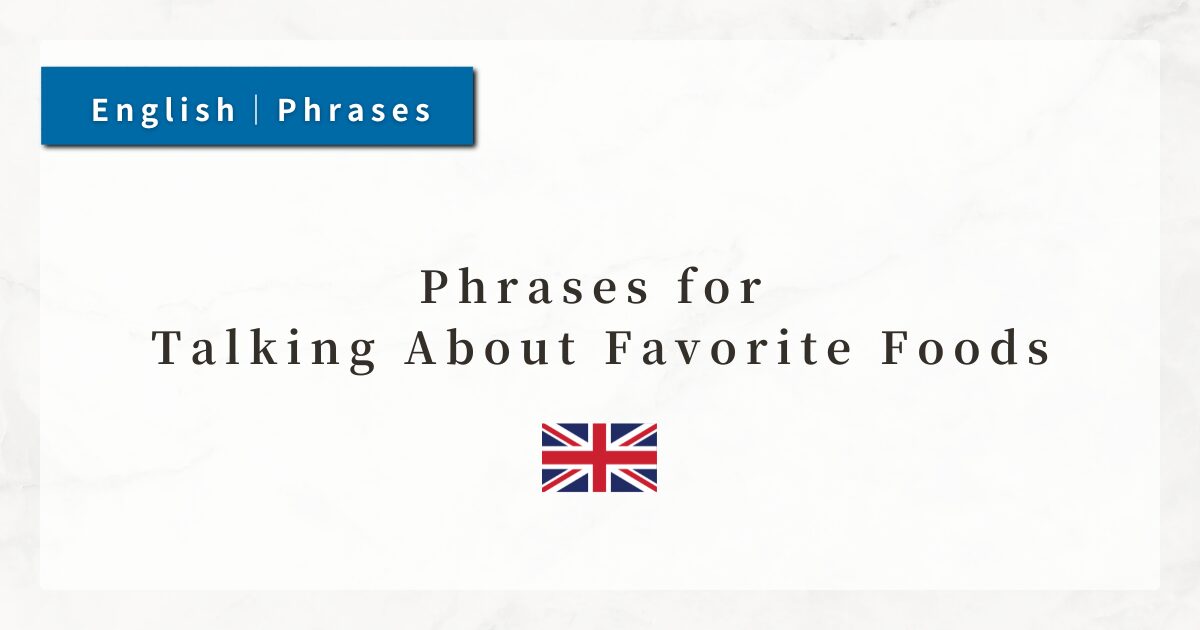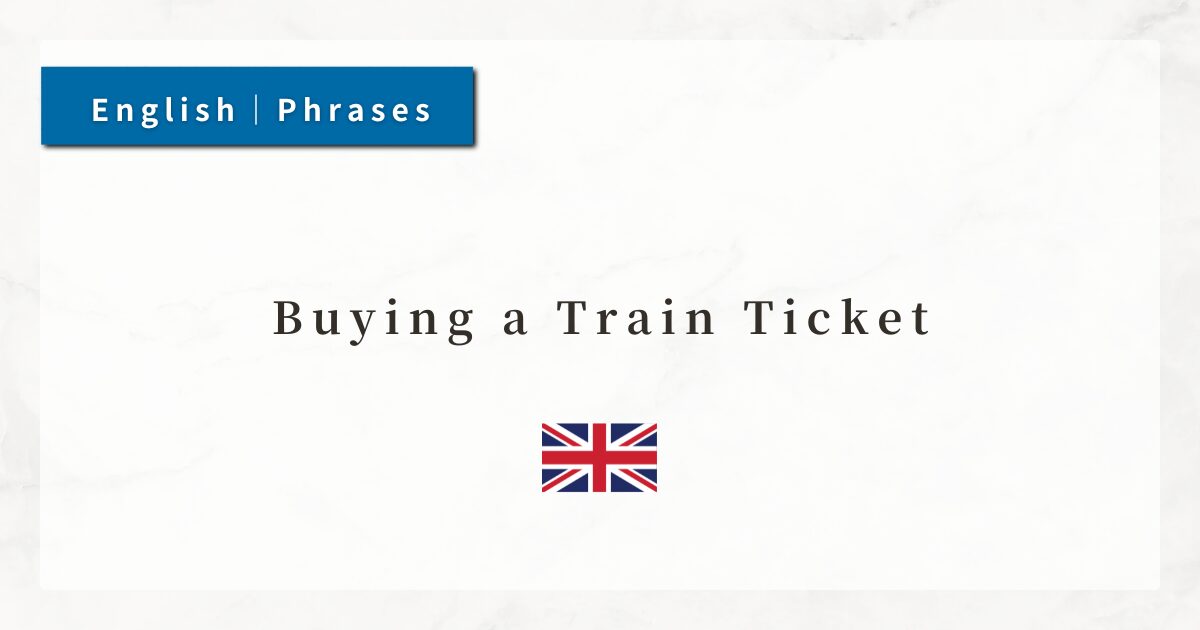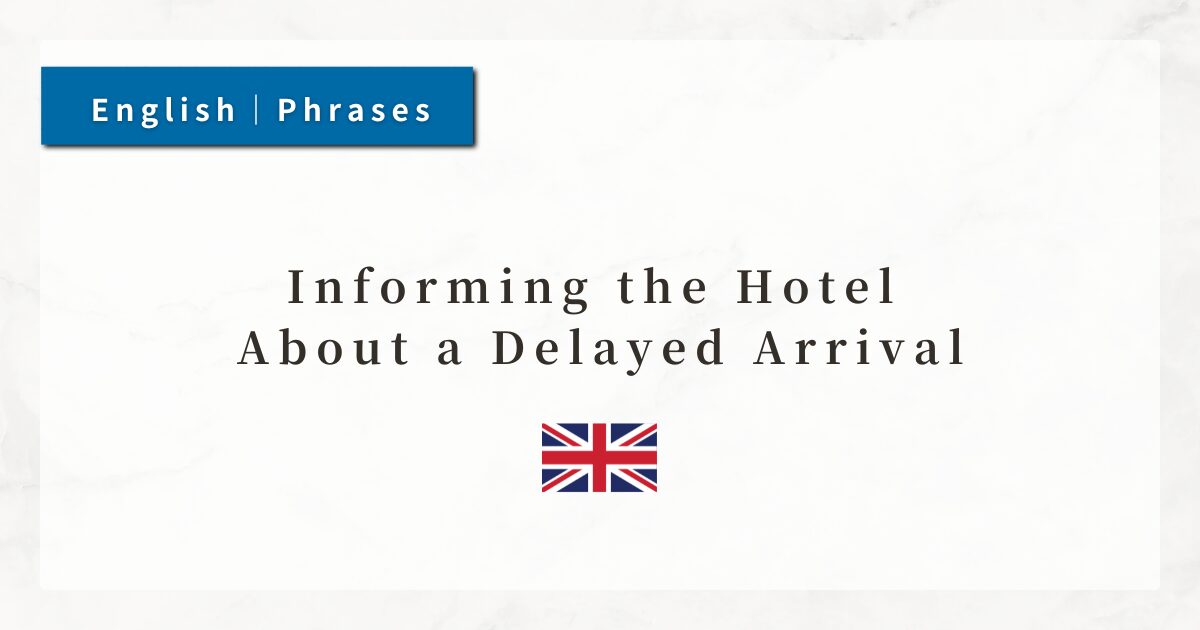Talking About Traffic and Road Conditions|English Expressions for Getting Around

It is quite common to get caught in traffic or be concerned about road conditions while on the way to your destination.
In such cases, being able to express situations like “The road is crowded,” “I heard there was an accident,” or “It looks like it will take some time” in English can help you avoid trouble caused by delays.
In this lesson, I will introduce useful phrases for talking about traffic conditions and explain how to describe road congestion, reasons for delays, and estimated travel times.
Dialogue

Sorry I’m late. The traffic is really bad this morning.

No problem. Was there an accident or something?

Yeah, I heard there was a car crash on the highway.

That explains it. How long did it take you to get here?

Almost an hour. Normally it takes half that time.

Wow, that’s rough. Let’s get some coffee to relax.
Grammar and Expression Points
1. Describing Traffic Conditions: The traffic is really bad.
The basic way to describe congestion is “The traffic is bad.”
By adding adverbs such as really, so, or terribly, you can emphasize the seriousness of the situation or express your feelings more strongly.
- The traffic is really bad today.
- The traffic is so heavy on Fridays.
Note: traffic is an uncountable noun, so you cannot say “a traffic” or “many traffics.” Expressions like “bad traffic” are possible.
2. Asking About the Cause: Was there an accident or something?
When you want to ask if something happened, such as an accident or delay, you can use this phrase.
The addition of “or something” softens the tone and makes the question sound less direct.
- Was there a delay or something?
- Was there construction on the road or something?
3. Sharing Information: I heard there was a car crash.
To pass along information you have received, you can use “I heard ~.” In spoken English, it is natural to omit that: “I heard there was ~.”
- I heard the train was canceled.
- I heard there was an accident on the freeway.
Using the “there is/was” structure makes it easy to express that “something happened.”
4. Reacting to an Explanation: That explains it.
“That explains it” is used when you understand or accept someone’s explanation, similar to saying “I see” or “That makes sense.”
- Oh, that explains the delay.
- That explains why you were late.
Here, the subject “that” refers to the situation, and “explains” shows that it accounts for the result.
5. Asking About Travel Time
To ask how long it took to do something, you can use the following structure: How long did it take + person + to + verb
- How long did it take you to get to the airport?
- How long does it take to drive to the city center?
For answers, you can say:
- It took me about 40 minutes.
- Normally it takes just 20 minutes.
Summary
- The traffic is really bad.
→ A standard phrase for describing heavy traffic. - Was there an accident or something?
→ A soft, polite way of asking about the cause. - I heard there was a car crash.
→ A natural way to share information you heard. - That explains it.
→ A useful expression to show understanding and agreement. - How long did it take you to get here?
→ A common way to ask about travel time.





